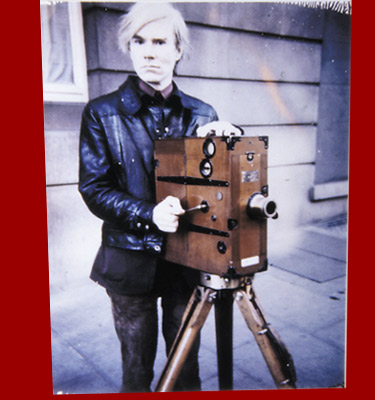

Andy Warhol’s debut film Sleep (1963) consists of scenes of poet John Giorno, Warhol’s boyfriend at the time, sleeping for over five hours. Nothing else happens in the film.
Sleep is one of those great works in film history that very few people have actually seen. It is remembered as one of the most sensational provocations in modern art, but is commonly still regarded as a kind of cinematic joke. The commonly held conception of this extraordinary film is that it is a boring and realistic piece of real-time cinema shot from one single angle. Later critics, however, have found in Sleep one of the seminal works of structural cinema. It has also been brought forward as a highly sensitive homoerotic masterpiece. Warhol filmed it for no less than five months. It contains several different angles, and meticulous attention has been given to the variations of lighting and atmosphere. And, even more significantly, some of the shots are repeated for up to five times during the film.
Andy Warhol (1928-1987) became famous as a commercial artist and a magazine illustrator. He admired the bohemian filmmakers of the early 1960s New York, most of all the decadent director Jack Smith, who had just finished his masterpiece Flaming Creatures (1963, Avanto 2001). According to Warhol’s own self-mythology, however, he was at the time still too neurotic and introverted to participate in the collective group work required in filmmaking.
Jonas Mekas, the founder of New York Film-makers’ Co-op and the publisher of the journal Film Culture, saw Sleep at the time of its premiere. It was claimed to be an insult against the viewers’ intelligence, but Mekas realised the film’s importance. Warhol demanded the film to be screened always at 16 frames per second instead of the usual 24 frames per second, the speed it was shot at; this results in all the movements being slowed down by one third of their real speed. Mekas found this to be the core of Warhol’s art, the small shift which transformed the whole into something entirely different. According to him, Sleep presented an entirely new way of looking at the world.
John Giorno later recalled the process of making Sleep: “I loved to sleep. I slept all the time, twelve hours a day... Everything awake was so horrible.” In this sense, Sleep is a very traditional film: a subtle and delicate portrait film, in which a person very dear to the director is doing what he loves most.
Andy Warhol’s Sleep in the Kiasma Theatre on Sunday, November 21st, 16.00-20.45. Free entrance.